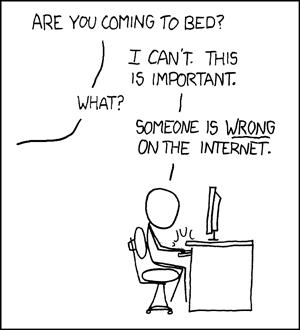
I don’t know if a critic can be said to be trolling if he’s published by a major newspaper, but Jim Schembri is surely coming close with this piece on why Alvin and the Chipmunks: Chipwrecked is a better piece of animation than Tintin.
My problem is not with the central thesis. I love championing of so-called “low” movies, and I love it when critics find things in a movie they think others have overlooked. I haven’t subjected myself to Alvin 3, and am not about to simply to see if Schembri is right. But just taking the Tintin side of the equation here, the article is full of comments that don’t add up.
Let’s consider various of his statements in turn.
So much hype has been generated over the exacting Avatar-esque standard of the motion capture animation in Tintin that one important measure of quality has been overlooked. All ballyhoo aside, the task of making animated human characters behave and move like their real-life counterparts is simply less demanding for animators than imbuing those same characteristics into non-human characters.
Putting aside the legitimate debate about the merits of motion-capture (about which I’ve written a lot over the years), this doesn’t bear the slightest scrutiny as a statement about animation more broadly. All other things being equal, realistic human characters are much more difficult to animate than human-like stylised animals. There is a reason Disney gave us Mickey Mouse in the late 1920s but wouldn’t tackle Snow White until in the late 1930s. Michael Barrier’s book Hollywood Cartoons: American Animation in its Golden Age gives lots of details over just how hard the realistic human characters in that film were to do, and they barely pulled it off. They had so few animators who were up to it that they had to resort to the rotoscoping (ie tracing) live action footage: the 1930s equivalent, in other words, of motion capture. Again, the merits of that process aside, humans are way harder to animate than stylised, human-like animals. That’s why motion capture – or the rotoscope – are so tempting.
In Alvin 3, the chipmunks must seamlessly blend into a live-action world; Tintin doesn’t have that challenge.
You can simply go out and film a live action world, and there’s nothing especially difficult about inserting computer animated figures into it: pretty much every effects-laden Hollywood film does this. Creating an entire world of settings, props, vehicles and the like in a computer is really hard. Tintin is, if nothing else at all, a triumph of virtual production design.
As was the case with The Phantom Menace, Tintin features that rapid-fire cutting technique so common to most cookie-cutter blockbusters.
Firstly, Schembri knows Spielberg didn’t make The Phantom Menace, right? I just ask because it’s weird how this unrelated movie from twelve years ago turns up in the middle of that sentence.
Anyway – as to the editing: we’ll have to wait for DVD to do a detailed analysis, but Spielberg is one of the least “cutty” – that’s a technical term – of the major blockbuster directors. Tintin is pretty classical by modern standards, and many have remarked on its unusually long shots, notably during the downhill chase through the village. I wrote a piece on fast cutting a few years back that cited Spielberg as an example of traditional editing patterns, and while there have been changes to his style over the years, he remains a director who generally speaking favours relatively long, steady, uninterrupted shots. I just can’t reconcile Schembri’s observation with the movie I saw.
Back in the pre-history of animation Walt Disney knew that the soul of a character resides in the eyes. You can get everything else right, but if audiences don’t believe the eyes there’s no heart.
Firstly, I assume that Schembri means the “early history” of animation, not the “pre-history.” Pedantry aside, though, I’ve read (and written) a lot about Disney over the years and this statement doesn’t ring a bell: I’d love to see Schembri’s source. Nor does it make much sense to me. In the traditional animation in which Disney worked the one thing you can do basically nothing with is the eyes. Mickey Mouse’s eyes were abstract triangle-and-circle abstractations for his first decade, and even as animation got more sophisticated eyes were never much more than a black pupil in a circle. Hand-drawn anaimation is about everything but the eyes.
Yes, I’ve skipped over some legitimate and arguable points Schembri has made. And he is skirting at the edge of a genuinely fascinating debate to be had about motion capture, the uncanny valley, and the nature of animated performance. But that debate doesn’t get anywhere when critics just make broad, nonsensical statements about animation and film technique like those above.
